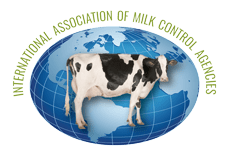Thoughts on the Next IAMCA Meeting
Thoughts on the Next IAMCA Meeting
Doug Thompson, IAMCA President, General Manager, Dairy Farmers of Prince Edward Island
As the world faces a resurgence of cases with Covid-19, thoughts turn toward the events and meetings that we all look forward to each year. It’s difficult to see if we can host the 2021 meeting, since the border is currently closed. With a second wave happening, it’s uncertain when that is going to the change. The US has seen a bump as well as Canada, and it’s sad to say that planning to host an event anywhere in person is a risk. The question comes down to this – do we tread water and just wait and do it in several years, or do we shift gears. If we can’t meet in person, we’re look into options for holding the meeting as a webinar. We’ll know more in the January or February timeframe and can adjust if things change.
There are definite plusses to holding the meeting as a webinar. People aren’t buying a meal or having the expense of traveling from all across North America. We could make the conference a webinar series spread over two to three afternoons for a few hours.
For our members, what topics interest you, and what things would you like to learn more about? Personally, I’m really interested in a follow up from Dan McCarthy, IAMCA Secretary and Treasurer, on how the use of automatic metering of milk pickup in New York state has gone. There are a number of issues that could be eliminated by using automatic meters for milk pickup. Dipstick measuring introduces all type of things that can introduce inaccuracy – inches converted to centimeters, converting to liters or gallons. Changing how milk is metered may be a wonderful opportunity to to eliminate those inaccuracies.
While we have other ideas, we certainly welcome hearing from the membership on what they would like presented at the next meeting. And speaking of the membership, I think that right now we need to develop membership base, especially in the United States. Covid-19 and the fact that we can’t meet in person is providing us with an opportunity to bring people in that might not come normally due to the cost of travel. Now it’s up to us to deliver a great and interesting product. Let’s look at what we can present to those that haven’t been involved with IAMCA before, so they know the value that we bring to each other.

